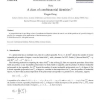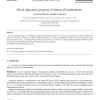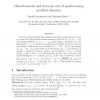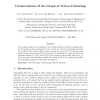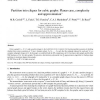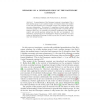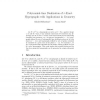67
Voted
DM
2006
15 years 13 days ago
2006
A general theorem for providing a class of combinatorial identities where the sum is over all the partitions of a positive integer is proven. Five examples as the applications of ...
87
Voted
DM
2006
15 years 13 days ago
2006
Let n be a positive integer. A tournament is called n-existentially closed (or n-e.c.) if for every subset S of n vertices and for every subset T of S, there is a vertex x / S whi...
78
Voted
COMBINATORICS
2006
15 years 14 days ago
2006
Let m be a positive integer whose smallest prime divisor is denoted by p, and let Zm denote the cyclic group of residues modulo m. For a set B = {x1, x2, . . . , xm} of m integers...
76
Voted
COMBINATORICS
2006
15 years 14 days ago
2006
For n a positive integer, we show that the number of of 2n-tuples of integers that are the row and column sums of some n
101
Voted
EJC
2008
15 years 14 days ago
2008
Given the set [n] = {1, . . . , n} for positive integer n, combinatorial properties of Clifford algebras are exploited to count partitions and nonoverlapping partitions of [n]. Th...
87
Voted
EJC
2008
15 years 14 days ago
2008
Let X be a set of points in general position in the plane. General position means that no three points lie on a line and no two points have the same x-coordinate. Y X is a cup, r...
66
Voted
DM
2008
15 years 15 days ago
2008
For a positive integer k and a graph G, the k-colour graph of G, Ck(G), is the graph that has the proper k-vertex-colourings of G as its vertex set, and two k-colourings are joine...
103
Voted
DAM
2008
15 years 15 days ago
2008
Given a graph G = (V, E) and a positive integer k, the PARTITION INTO CLIQUES (PIC) decision problem consists of deciding whether there exists a partition of V into k disjoint sub...
110
Voted
DM
2010
15 years 15 days ago
2010
A generalization of the Davenport constant is investigated. For a finite abelian group G and a positive integer k, let Dk(G) denote the smallest such that each sequence over G of l...
85
Voted
DM
2010
15 years 15 days ago
2010
Let H 2V be a hypergraph on vertex set V . For a positive integer r, we call H r-exact, if any minimal transversal of H intersects any hyperedge of H in at most r vertices. This ...
